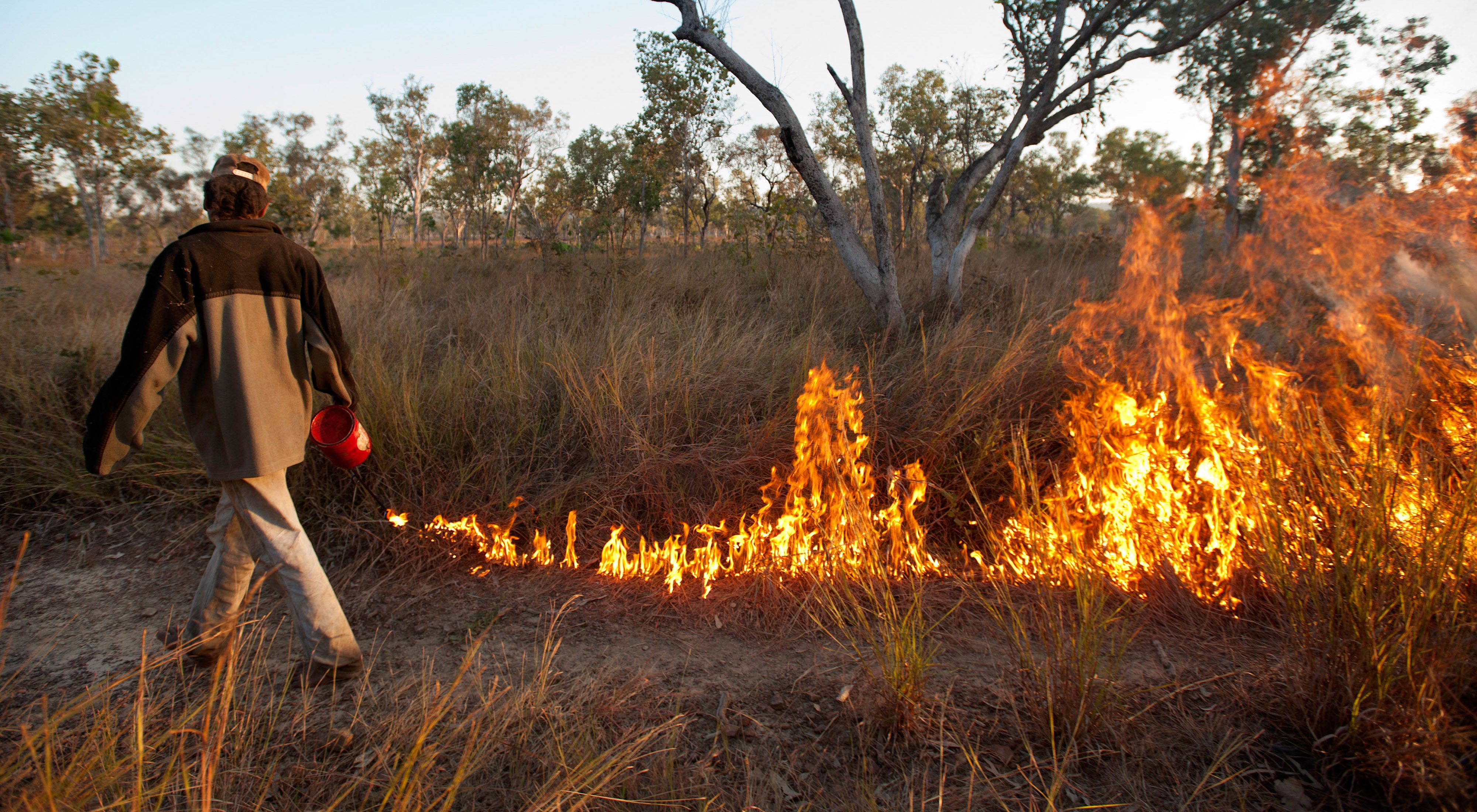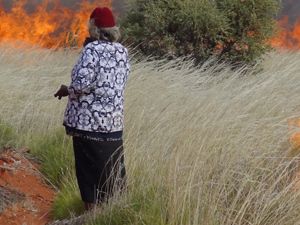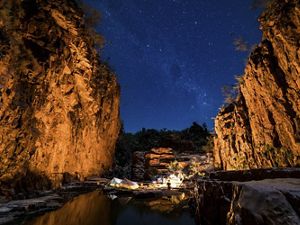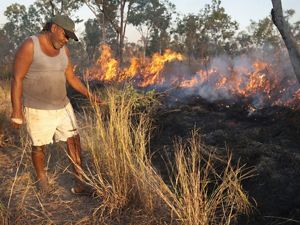Bringing Indigenous Fire Back to Northern Australia
Indigenous fire management benefits biodiversity and reduces climate emissions.
Flames crackle in the long grass, licking the bark of low trees scattered across the savanna. The fire creeps forward, a narrow line of brilliant orange advancing across the landscape. The rangers direct the fire in the right direction, dripping flames from the end of a can as they walk through the grass.
Birds of prey glide through the smoke, scanning the fire front for small marsupials and lizards fleeing through the blackened vegetation. In a few months, when the wet-season rains arrive, glowing green shoots will push through the charred grasses. New life follows in the wake of the fire.
Here in northern Australia, The Nature Conservancy supports Indigenous partners in their efforts to manage their lands with fire, combining cutting-edge fire science with traditional knowledge. Using fire in the landscape in the right way protects wildlife, reduces carbon emissions and strengthens Indigenous culture.
Aboriginal people have lived in Australia since time immemorial, and over time they used fire to manage the landscape. Small, controlled fires help them hunt, clear pathways through the land and regenerate vegetation. Australia’s flora and fauna evolved to live with fire, and now many species—like finches and small marsupials—rely on these small, controlled burns to create the right mix of habitat for them to survive.


When European settlers arrived, many Indigenous Australians were forced off their land and were unable to care for their country with fire. Without regular people-lit fires in the cooler months, dry grasses build up and provide fuel for lightning-sparked wildfires later in the year. These fires burn significantly larger areas at hotter temperatures, releasing more of the carbon dioxide and other greenhouse gases, like methane and nitrous oxide, stored in the vegetation.
Large wildfires are detrimental for wildlife, too. Traditional fire management leaves behind small patches of vegetation in different stages of regrowth, providing a variety of different habitats. But the large, hot fires torch vast areas of the land, making it difficult for any animals to find food and shelter.
These land-use changes, combined with invasive predators, have taken a heavy toll on Australia's wildlife.
In the last 200 years, Australia has a higher record of extinction of mammal species than anywhere else in the world. A full 30 species have gone extinct since European settlement—10% of all terrestrial mammals in Australia—and a further 21% are currently threatened. (For comparison, only one native land mammal, the sea mink, went extinct in continental North America after Europeans arrived.)
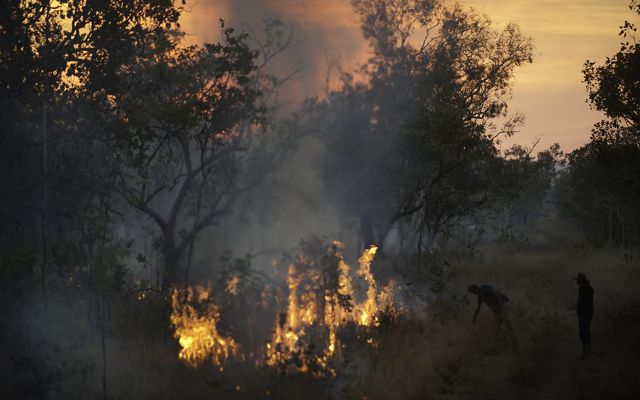
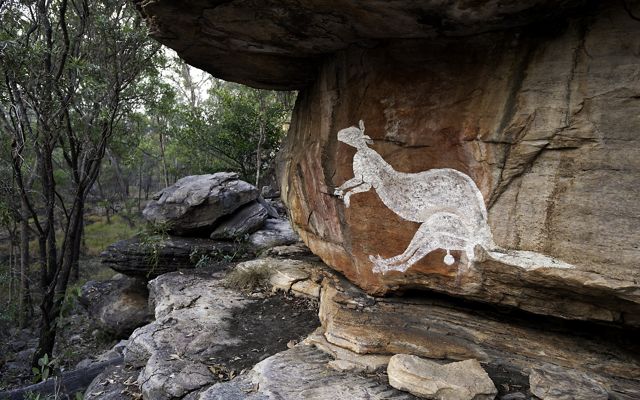
Indigenous fire management is critical for ecosystem health. That’s why TNC is working with Traditional Owners to restore fire management across vast areas of northern Australia.
Australia’s northern grasslands are the largest intact tropical savanna ecosystem on Earth. A biodiversity hotspot, they are home to more than half of Australia’s bird species and around one-third of its mammal species.
TNC’s work in northern Australia is founded on supporting Indigenous communities in their efforts to reconnect and restore the health of their lands. Through Healthy Country Planning, communities identify land management objectives together with social and cultural values. Indigenous burning is a key component, with ranger teams strategically lighting small, cool fires at the right time of year.
Scientific research has confirmed that traditional fire management increases biodiversity and benefits the ecosystem. Small, patchy burns create a mix of different habitat types that provide more food for wildlife, and can even limit the harmful effects of invasive predators, like cats and foxes. Species like the rainbow-colored Gouldian finch, northern quoll, and black-flanked rock-wallaby all benefit from a return to traditional burning practices.
Traditional fire management also reduces greenhouse gas emissions and keeps more carbon stored in woody vegetation. By burning early in the dry season, when it’s cooler and wetter, Indigenous rangers reduce the fuel load and fire intensity, as well as prevent large-scale, late-season wildfires. Indigenous groups can then claim this reduction in overall greenhouse gas emissions as a carbon credit, which they can then sell to fund additional land management.
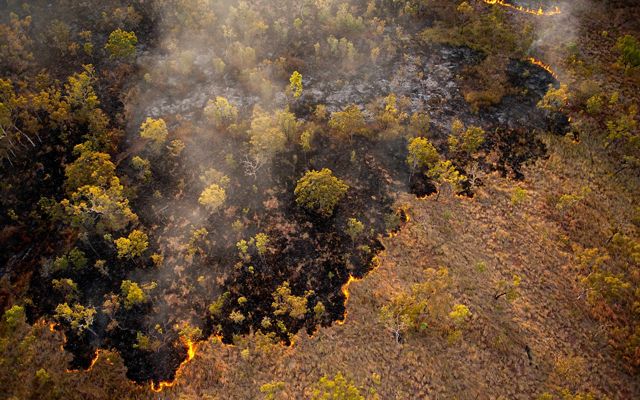
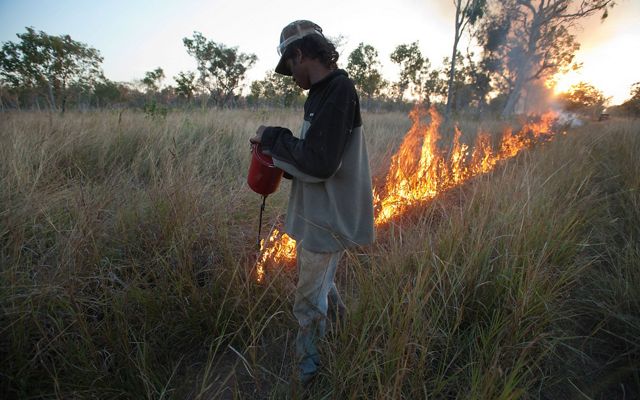
As of 2021, 32 Indigenous-owned and operated savanna fire projects are underway across 17.9 million hectares in northern Australia. Their work abates around 1 million tonnes of emissions per year, generating around $95 million in Australian Carbon Credit Units since 2012.
This work has great potential for climate abatement beyond Australia. TNC scientists identified 37 other countries where similar fire management techniques could help reduce net emissions from savanna fires, with an abatement potential of 89.3 million tonnes of carbon dioxide equivalents per year.
This work helps support Indigenous Australians return to their land, strengthen their culture and community ties, and pass down traditional knowledge from Elders to younger generations.
Bringing traditional fire practices back to the land isn’t just about saving wildlife or curbing carbon emissions—it’s about strengthening Indigenous communities.
